Weighing In Will Net Valuable Safety Benefits
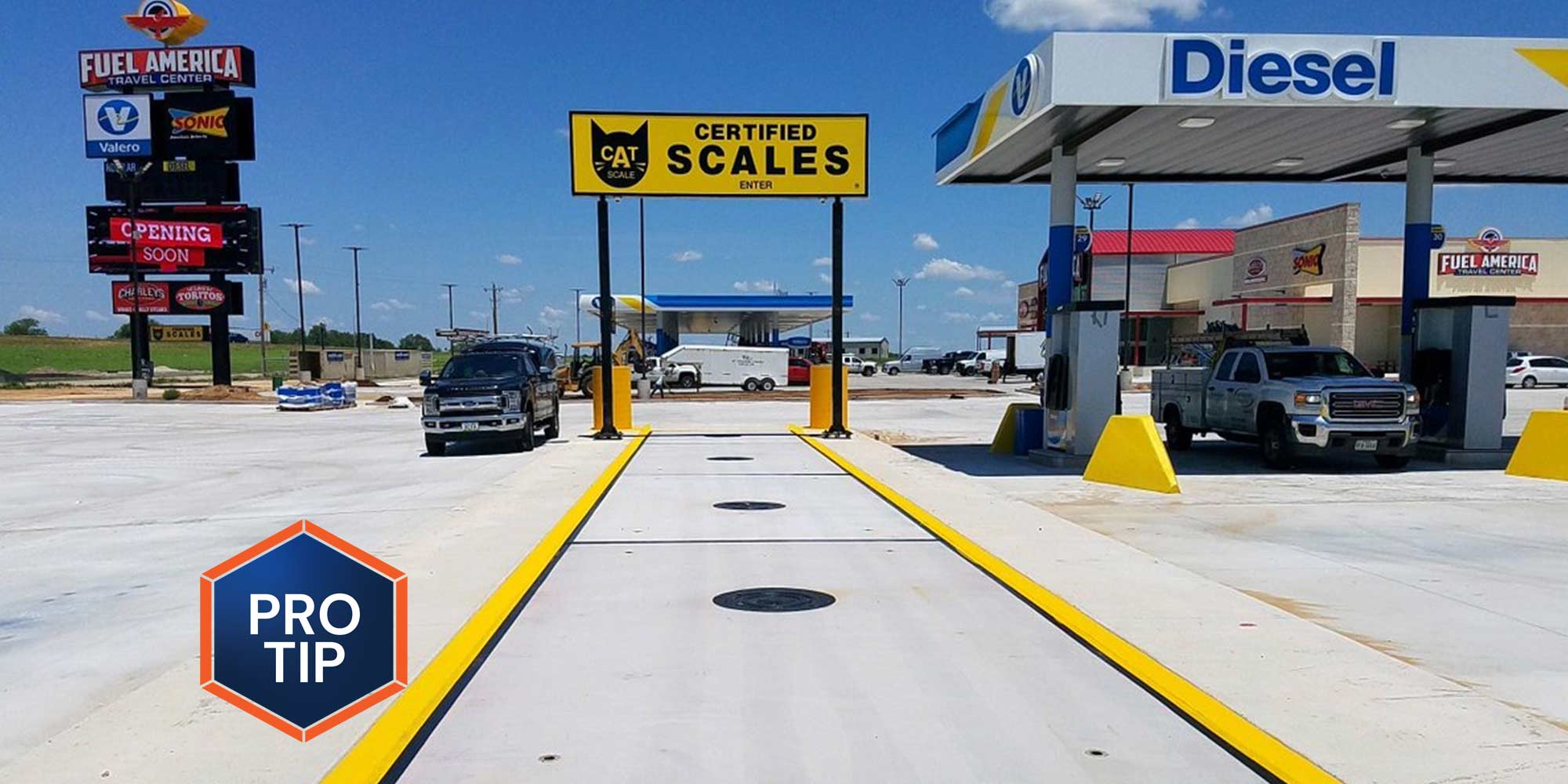
Regardless of whether you own a quad-slide luxury fifth wheel or a simple teardrop travel trailer, weight always plays an important role in how your RV is loaded and how much cargo it can safely handle.
Weighing your rig when it is full of water, propane, fuel and all necessary supplies for travel will give you the actual weight of your rig, not the stated base weight. It will also give you the actual hitch or pin weight, which is important when making sure the tow vehicle’s payload and gross axle weight rating (GAWR) have not been exceeded. It can even sort out problems you may be having with your individual set-up, allowing you to adjust placement of weight within your RV.
Knowing the actual weight will also tell you how much margin is left before the trailer/tow vehicle is overloaded, which may come in handy on a long trip where you may want to travel with more gear or supplies.
The best way to weigh a vehicle is by wheel position (individual wheel weights), and the RV Safety and Education Foundation (RVSEF) does this for RVers all over the country. However, if you can’t connect with the RVSEF (go to rvsafety.com/schedule for more information) getting your rig weighed on a truck scale in your community is the next-best option. These can often be found at truck stops, moving companies, landfills and the like — just Google “truck scales” and your zip code or “truck scales near me.” A truck scale will provide overall vehicle weight and — if you can position the vehicle properly — the axle weights as well. With trailers, you can also get pin or hitch and axle weight.
Truck scales generally consist of separate sections or “platforms” that conform to the axle positions for tractor-trailers, but these will work for tow vehicles with trailers and motorhomes as well. To get the most complete picture, pull your front axle up to the front of the forwardmost platform. Take a look back at which axles are on the respective platforms: If you’re weighing a tow vehicle and trailer, you will want your front or “steer” axle on platform No. 1 and the drive axle on platform No. 2 on a three-or-more platform system. Your trailer axles should be on the third platform. Your weight report will list each platform as a separate axle, so if you need to adjust your rig on the scale, do so before hitting the intercom button (used at many weigh stations to communicate with the weighmaster) for the final weight numbers.
This first weigh will give you the gross combined weight and axle weights, depending on where the axles fall on the scale. If you’re towing a trailer and want to know its weights, you’ll have to do a second weigh. After the first weigh, tell the operator that you’ll need a second weigh for the trailer. If you are weighing a motorhome, the weigh ticket will provide axle and total weight. There is no need for a second weigh. However, if you’re towing a dinghy, it’s a good idea to weigh it, as well, in order to determine the gross combined weight of your rig.
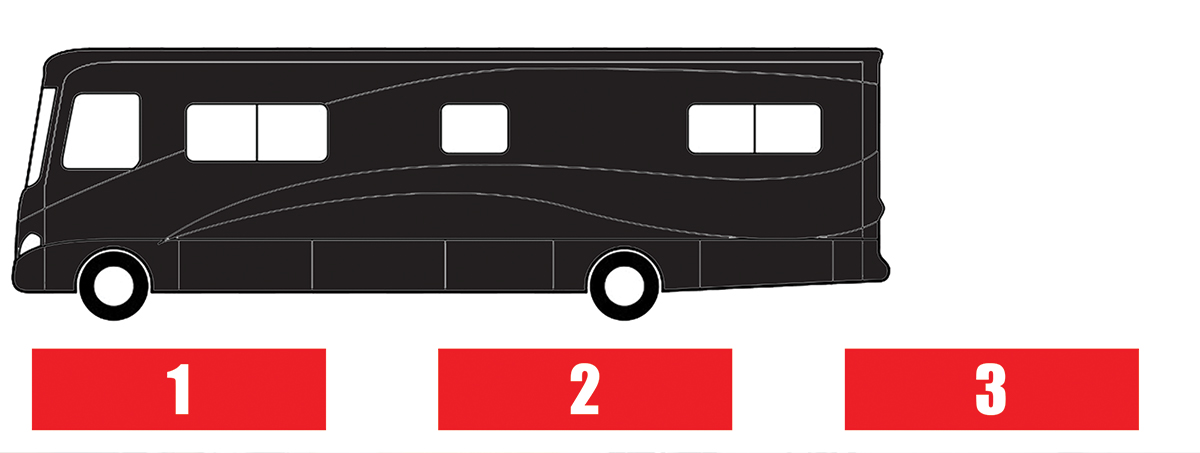
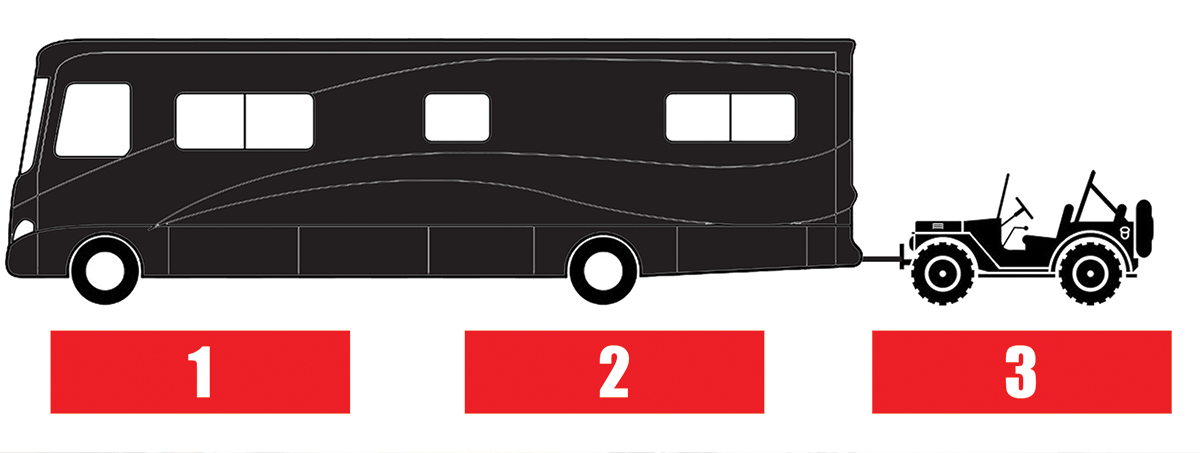
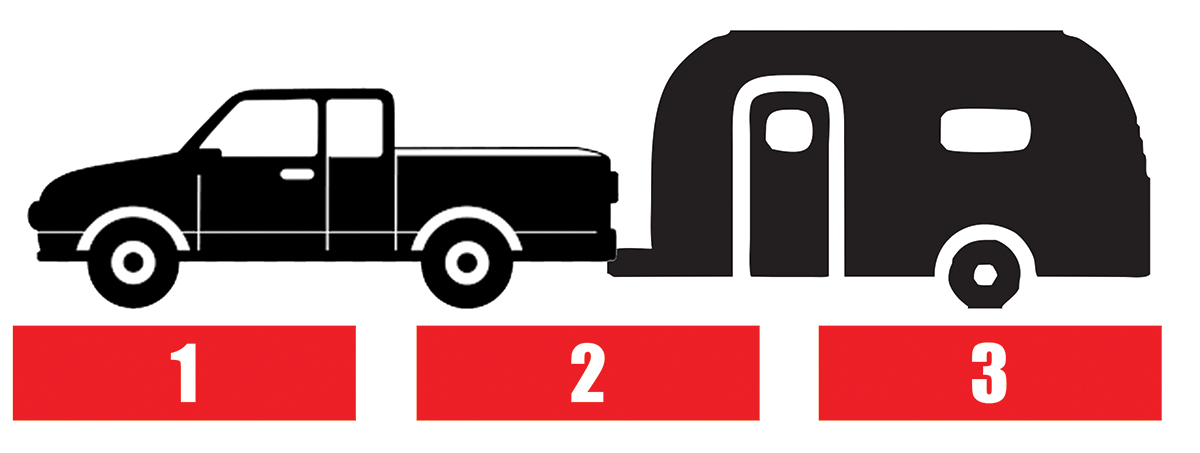
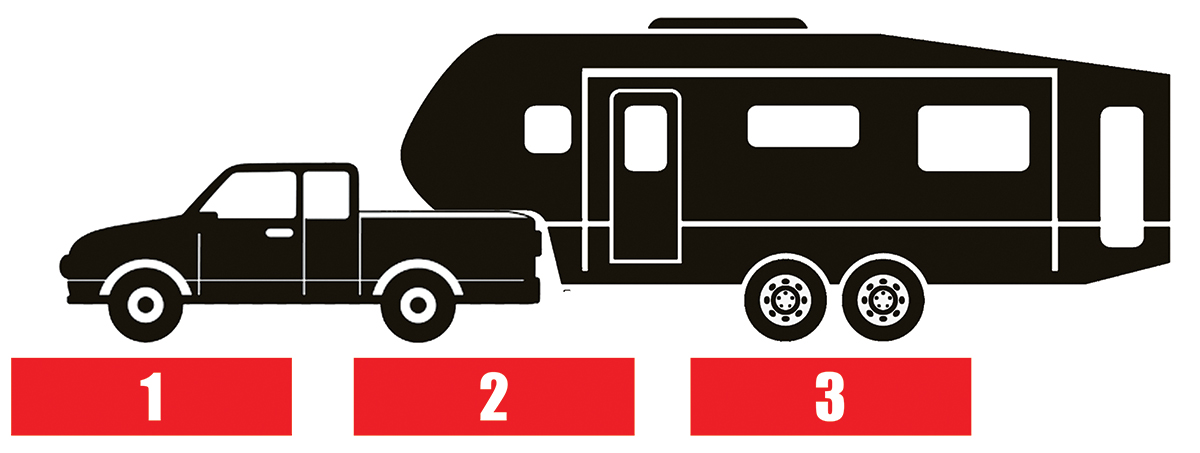
The first weigh will give you:
- Gross combined weight (GCW) of the truck and trailer.
- Gross vehicle (GVW) and axle weights for a motorhome.
- Tow vehicle front and rear axle weights, which will show you the operating weight of the tow vehicle axles. Note: This weigh should be done with weight-distributing equipment in place (if applicable) as you would have it while driving.
- Trailer axle weight(s).
The second weigh will give you:
- The truck’s actual weight and individual axle weights without the trailer, but otherwise loaded for travel.
With this information you can determine:
- The hitch/pin weight of the trailer. Subtract the total tow vehicle weight without trailer from the tow vehicle with the trailer. The difference is the operating trailer hitch/pin weight, since the weigh was with the weight distribution system in place (travel trailers). Fifth wheel trailers will be the actual pin weight.
- The rear-axle weight of the tow vehicle to determine if it is overloaded.
We all want our RV experiences to be safe, enjoyable and as economical as possible. Paying attention to tow vehicle, trailer and motorhome weight at the beginning of a trip — and making sure you don’t pick up too much weight while on the road — will go a long way toward that goal.
Already a Subscriber? Click here for Access to the Full Issues.

